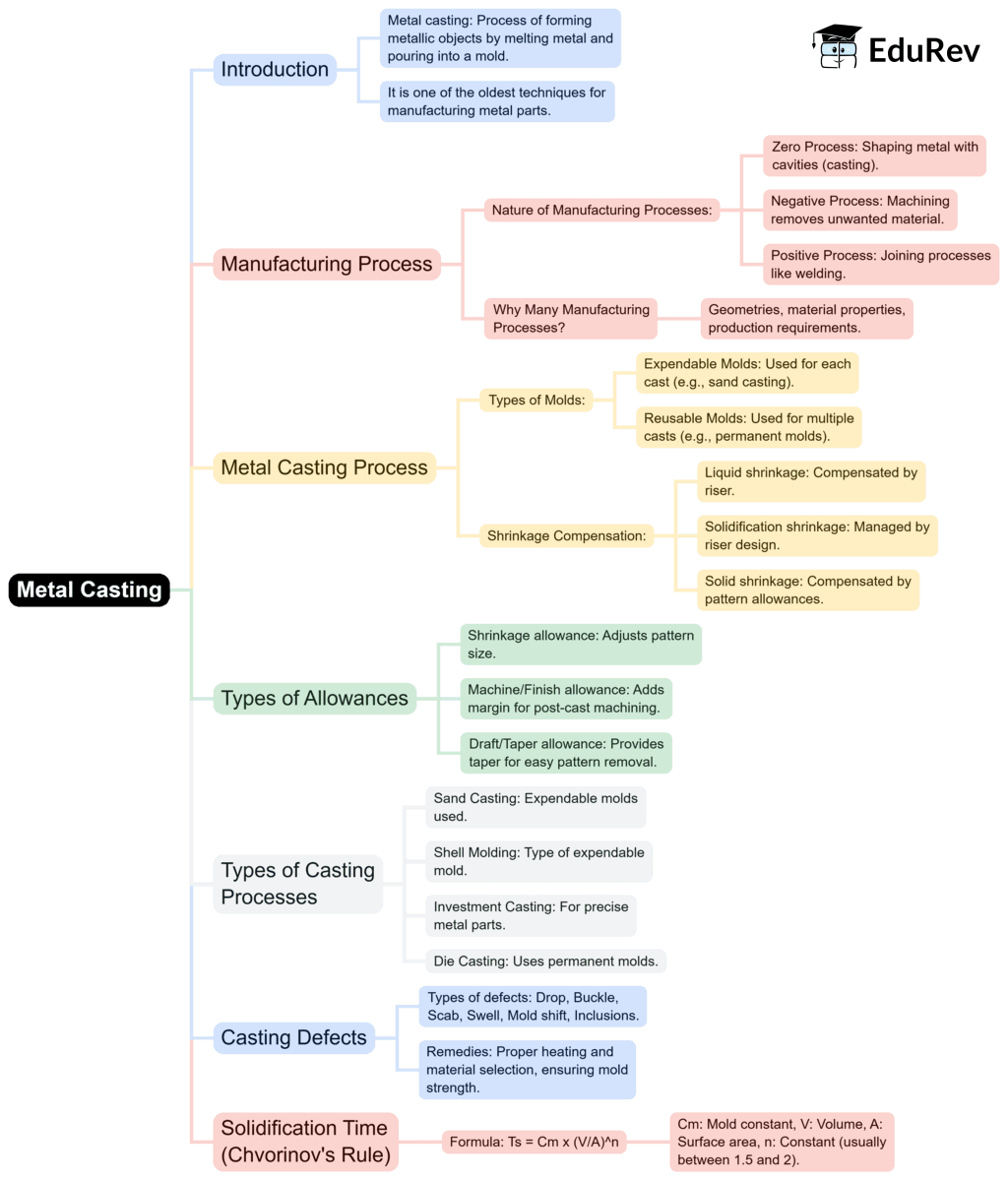Mechanical Engineering Exam > Mechanical Engineering Notes > Manufacturing Engineering > Mind Map: Metal Casting
Mind Map: Metal Casting | Manufacturing Engineering - Mechanical Engineering PDF Download

The document Mind Map: Metal Casting | Manufacturing Engineering - Mechanical Engineering is a part of the Mechanical Engineering Course Manufacturing Engineering.
All you need of Mechanical Engineering at this link: Mechanical Engineering
|
56 videos|80 docs|29 tests
|
FAQs on Mind Map: Metal Casting - Manufacturing Engineering - Mechanical Engineering
| 1. What are the main types of metal casting processes? |  |
Ans. The main types of metal casting processes include sand casting, investment casting, die casting, and continuous casting. Each process has its own advantages and is suitable for different applications based on the material, desired shape, and production volume.
| 2. What materials are commonly used in metal casting? |  |
Ans. Common materials used in metal casting include aluminum, iron, steel, bronze, and magnesium. The choice of material depends on the mechanical properties required, the casting process being used, and the intended application of the final product.
| 3. What are the advantages of using metal casting in manufacturing? |  |
Ans. Metal casting offers several advantages, including the ability to create complex shapes, the production of large quantities of parts with high precision, reduced material waste, and the capability to use a wide variety of metals. Additionally, it often requires less machining and finishing compared to other manufacturing processes.
| 4. How does the cooling rate affect the properties of cast metal? |  |
Ans. The cooling rate of cast metal significantly affects its microstructure and mechanical properties. A fast cooling rate can lead to a finer grain structure, increasing strength but potentially decreasing ductility. Conversely, a slower cooling rate can produce coarser grains, enhancing ductility but possibly reducing strength.
| 5. What safety precautions should be taken during metal casting? |  |
Ans. Safety precautions in metal casting include wearing appropriate personal protective equipment (PPE) such as heat-resistant gloves, safety goggles, and face shields. Proper ventilation should be ensured to avoid inhalation of harmful fumes, and all equipment should be regularly maintained to prevent accidents. Additionally, workers should be trained in emergency procedures.
Related Searches





















